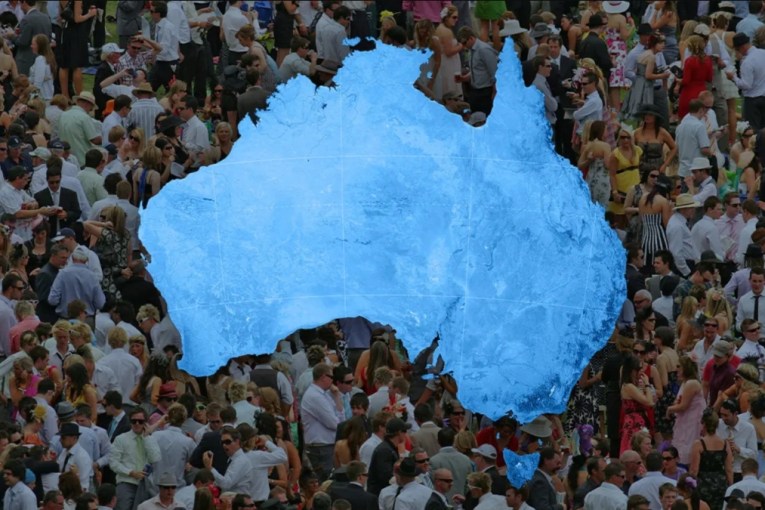Coalition attacks Labor tax plan, Labor boosts Medicare


Deakin MP Michael Sukkar and Prime Minister Scott Morrison visiting a Melbourne business on Monday. Photo: AAP
Tax cuts for police, nurses and teachers earning $75,000 will need to be repealed or dumped if Bill Shorten is elected, leaving average workers about $973 a year worse off by 2025.
Every worker in Australia earning more than $40,000 a year will be better off under Scott Morrison’s tax plan by 2023, according to a new analysis.
But workers will have to wait longer for the full benefits to flow, a promise Labor has slammed as “tax cuts on the never never”.
Treasurer Josh Frydenberg will on Tuesday highlight the long-term benefits of the Coalition’s bigger tax cuts if voters keep the faith on tax cuts promised in the April 2 budget.
Some of those changes have already been legislated, with Labor vowing to repeal the tax cuts if elected.
Labor has already pledged it will match the Coalition’s $1080 tax refund from July 1 for workers earning under $130,000.
But for workers earning under $40,000 – largely women working part-time – Labor is offering a better deal.
The Liberal Party’s new analysis of the impact of its tax plan outlines the longer-term benefits.
It finds that a Sydney electrician earning $65,000 a year now will be better off by $700 a year compared with Labor’s plan by 2025.
A NSW police officer earning $75,000 today can expect to be better off by $973 a year under the Liberals by 2025.
“Anyone earning more than $40,000 will better off under our plan,” Mr Frydenberg said.
“It means school teachers, nurses, bus drivers and emergency service workers right across the country will have more money in their pocket.
“Our plan provides greater reward for effort, while ensuring top earners continue to pay their fair share.”
But while an electrician can expect to be $700 a year better off by 2025, the tax cut that will be delivered to high-income earners is much bigger.
A high-income earner with a salary of $200,000 a year can expect to secure 10 times that amount – a tax cut of $7000 a year.
The reason is the reduction of the 32.5 cent tax rate to 30 cents and the abolition of the 37 per cent tax bracket will deliver big tax cuts that will flow through to all workers with bigger benefits for higher-income earners.
While the abolition of the 37 per cent tax bracket has already been legislated, the other changes announced in the April 2 budget have not.

How a worker would fare in the year 2024-2025, according to the government.
Labor attacks 2025 tax vow as on the never-never
Labor’s treasury spokesman Chris Bowen did not dispute the figures, but said it was tax relief “on the never-never”.
“On those figures, the government would have to be re-elected twice,” Mr Bowen said.
“This is a government which is saying ‘Vote for us for the next two times. We will eventually get around to tax relief’. We’re offering bigger tax relief for Australians earning less than $48,000 this year. We can afford it because of the tough decisions we have made elsewhere. Again that’s the policy difference between us.
“But the Liberals want us to believe that they should be re-elected this time and next time on a never never tax plan, which even Peter Costello has called out as being ridiculous.”
Labor will ‘save’ blood test bulk billing for seniors and cancer patients
Labor leader Bill Shorten is announcing another boost to Medicare on Tuesday, designed to eliminate out-of-pocket costs for blood tests for seniors and Australians battling cancer.
The $200 million investment is designed to ensure pathology tests remain free for older Australians and any patient undergoing cancer treatment.
“Blood tests are the frontline of treatment for cancer and serious diseases. They are critical not only for diagnosis, but to track whether a treatment is working or not,” Mr Shorten said.
“Every single one of these tests is on the line this election – and only Labor will make sure every single one of these tests are free.”
Dr Stephen Duckett, the health policy director at the Grattan Institute, has argued the government could save up to $175 million a year by changing the way it pays for pathology testing and negotiating efficiency dividends with the industry.
“Taxpayers spend more than $2.5 billion a year on pathology services via Medicare, but they’re not getting a good deal,” he said.
“Automated technologies allow pathology companies to run additional tests at very low cost, but under current arrangements the government still pays the full average cost of each test. Taxpayers also miss out on savings from volume growth, and the potential benefits of price competition.”
Labor will also again try and link cuts to health with Scott Morrison’s time as Treasurer – a key component of their attacks on the Prime Minister.
“As Treasurer, Scott Morrison tried to cut pathology by $650 million – and as Prime Minister, he’s failed to do anything to ensure that these critical tests remain free,” Mr Shorten said.
Labor is pledging to work with the sector to lift the bulk-billing incentive but hasn’t detailed exactly how this will work.
The policy notes that older Australians face 20 million pathology tests a year – while Australians with cancer are subjected to around three million pathology tests.
Labor’s $2 billion Medicare Cancer Plan already has policies to cut out-of-pocket costs for scans and MRIs for cancer.
Labor's going to prioritise cutting waiting list for surgeries ahead of tax loopholes for the top end of town. pic.twitter.com/AsvqA8T4bj
— Bill Shorten (@billshortenmp) April 15, 2019








